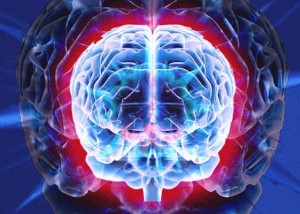Introduction:
Inoculation theory was devised by William McGuire in the early 1960s as a strategy to protect attitudes from change to confer resistance to counterattitudinal influences, whether such influences take the form of direct attacks or sustained pressures.In an age rife with misinformation and disinformation, defending truth becomes paramount.
However, combating falsehoods requires more than mere fact checking. It demands a proactive approach to fortify individuals against deception. Enter inoculation theory, a potent tool in the arsenal against misinformation. In this article, we delve into the potency of CDI theory, unveiling its transformative impact in safeguarding truth and upholding the integrity of factual knowledge.
Understanding Inoculation Theory:

At its essence, inoculation theory operates on the principle of pre-emptive exposure to weakened forms of misinformation. By inoculating individuals against deceptive narratives, this theory empowers them to recognize and resist manipulation.
Through a combination of warning messages and refutations, inoculation theory cultivates cognitive immunity, fostering critical thinking and skepticism in the face of misinformation.
Types of Inoculation Theory:
In our exploration of CDI theory, we encounter three primary types: fact-based, technique-based, and source-based. Fact-based inoculation equips individuals with factual explanations to debunk specific instances of misinformation.
Technique-based inoculation focuses on exposing deceptive tactics, while source-based inoculation reveals the lack of credibility in misleading sources. By employing these diverse inoculation strategies, individuals can build robust defenses against manipulation.
Implementing Inoculation Theory in Education:
Education serves as a vital arena for the application of CDI theory, enabling individuals to develop critical thinking skills and media literacy. Through passive, active, and experiential inoculation activities.
But educators can empower students to navigate the information landscape with discernment. By exposing students to misinformation, facilitating critical evaluation, and providing hands-on experiences, educators foster resilience against manipulation and promote a culture of truth-seeking.
Case Studies about Inoculation Theory
Real-world examples demonstrate the efficacy of inoculation theory in educational settings. From debunking pseudoscientific claims to analyzing deceptive advertising tactics. And these case studies highlight the practical application of inoculation techniques.
By immersing students in simulated scenarios of misinformation and equipping them with analytical tools, educators empower them to defend truth and resist manipulation effectively.
Based on the information provided, here’s a table summarizing the types of inoculation:
| Method of Inoculation | Fact-based | Technique-based | Source-based |
|---|---|---|---|
| Delivery Mechanism | Passive | Active | Experiential |
| Order | Prebunking (prophylactic) | Debunking (therapeutic) | |
| Style | Non-humorous | Humorous |
In the next three sections, real-world examples of three inoculation methods implemented in a general-education science course taught by Melanie at Massasoit Community College in Brockton, Massachusetts are outlined. The course, Science for Life, focuses on teaching students critical thinking, information literacy, and science literacy skills (Trecek-King, 2022).
Conclusion:
Inoculation theory emerges as a powerful defense against misinformation, offering proactive strategies to safeguard truth. By cultivating cognitive immunity and fostering critical thinking skills, this theory equips individuals to navigate the complex landscape of information with confidence and clarity.
As we confront the challenges of a digital age inundated with falsehoods, inoculation theory stands as a beacon of hope, empowering individuals to defend truth and uphold the integrity of factual knowledge.









